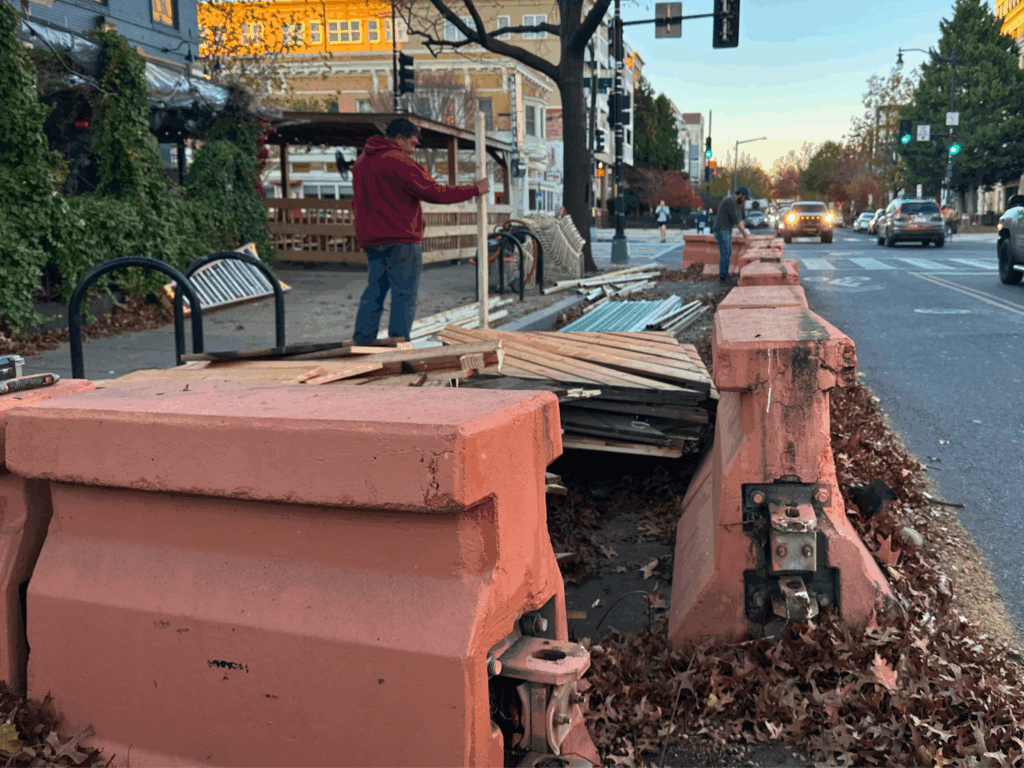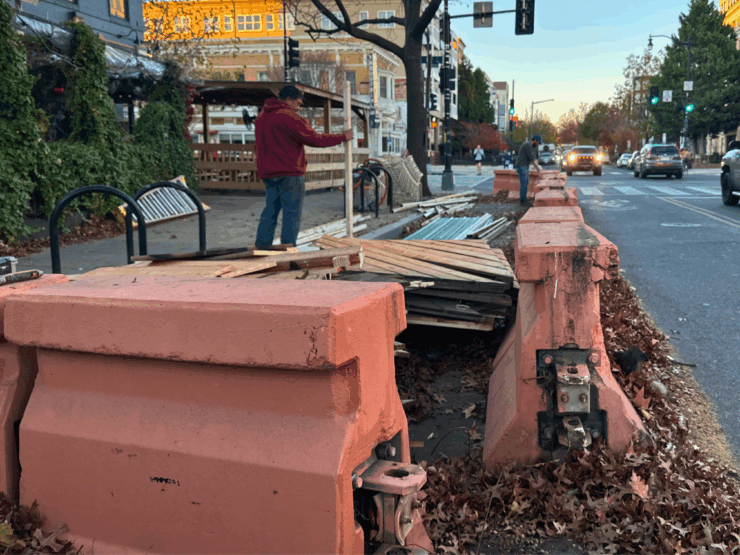U Street is one of D.C.’s busiest corridors, bustling with “streateries,” street eateries, spilling into parking lanes—for now.
A remnant of COVID-era distanced dining, the popular temporary program ends on Nov. 30 in favor of permanent rules that promise safer, more accessible structures for wheelchair users.
That is, if establishments choose to pay the fees for them.
The city’s new regulations include:
- Platforms (a raised, flush, sidewalk-level floor that replaces the old drop-down or step-up streatery setups);
- Clearer entryways; and
- At least one table that falls under the Americans with Disabilities Act (ADA)-compliant seating guidelines.
The new requirements come with fees and rebuild rules that many restaurant owners say they can’t afford, leading to their streateries getting torn down altogether.
Under the new permanent program, restaurants must pay a $260 permit fee plus a public-space rental charge of about $20 per square foot each year.
This is a big shift from the temporary program, where restaurants paid no fees at all.
Many U Street restaurant owners told The Wash that they cannot afford the new $20-per-square-foot fees or the cost of rebuilding platforms to meet DDOT’s standards. Most businesses did not want to be identified when reached out to for comment.

A spokesperson for the D.C. Department of Transportation (DDOT) told The Wash that the new permanent rules were designed to fix long-standing safety and accessibility issues in D.C.’s outdoor dining spaces.
“The platform is the bare minimum requirement,” the spokesperson said. “While it may come with increased costs, it comes with increased safety and access.”
The temporary program provided insight into major accessibility failures across the city’s streeteries, according to DDOT. A 2022 survey revealed over 90% of streateries didn’t have a platform or ADA-required ramp, DDOT said.
The survey influenced the agency’s new ADA-compliant guidelines, which DDOT said was consulted on with an ADA coordinator.
Kent Keyser, a public policy fellow at the United Spinal Association, said the new rules will only matter if the city — and businesses — choose to go beyond bare-minimum compliance.
“Accessibility just doesn’t help wheelchair users, it helps everybody,” Keyser said. “We urge local governments and businesses to remember that the ADA sets minimal, not maximum, standards.”
Josie Byzek, former senior director at the United Spinal Association, said that only one accessible table doesn’t reflect the reality of how people with disabilities dine out.
Title III of the ADA requires restaurants to provide equal access to public accommodations.
A streatery that offers only one wheelchair-accessible table — or creates conditions that prevent wheelchair users from entering at all — could still violate those laws, even if the setup technically meets city guidelines.
What if “two or three wheelchair users arrive independently of each other, and they can’t sit down at your restaurant to eat?” Byzek asked.
Mia Ives-Rublee, a wheelchair user and senior director for the Disability Justice Initiative at the Center for American Progress, said many restaurants still underestimate the demand for dining out among people with disabilities.
“There’s this general belief that disabled people don’t have disposable income,” Ives-Rublee said. “Then, when no one comes, they feel it proves their point — not realizing disabled people aren’t coming because of inaccessibility.”
She said streateries brought new opportunities for safer, outdoor dining during the pandemic, such as for people who are immunocompromised, but they also created frequent accessibility issues on U Street, including blocked curb cuts and crowds that clog sidewalks.
View this post on Instagram
Ives-Rublee said investing in accessibility measures is a future-proofing measure that benefits both businesses and customers in the long run.
“If you want to expand your customer base, it’s essential to make your business accessible because the U.S. is getting older and the disability community is growing,” she said.
Streateries gave many residents with disabilities their first real access to D.C.’s restaurants, according to Kate Radt, president of American University’s Disabled Student Union.
“For high-risk disabled people like me, outdoor dining was the only safe way to come back after lockdown,” Radt said. “And it let me try places that aren’t usually wheelchair accessible.”















Add comment